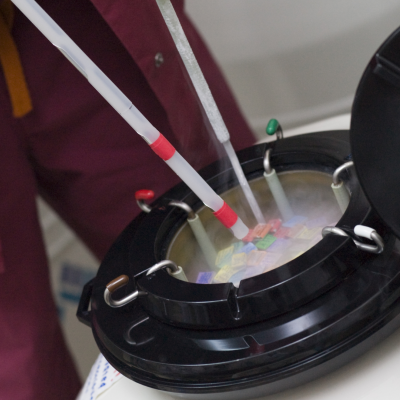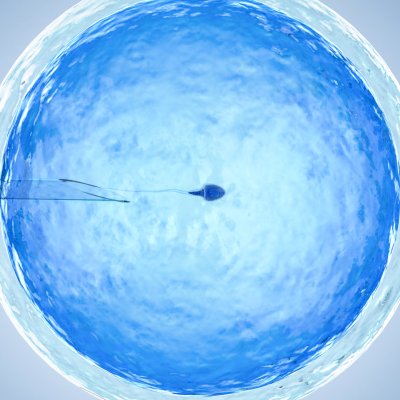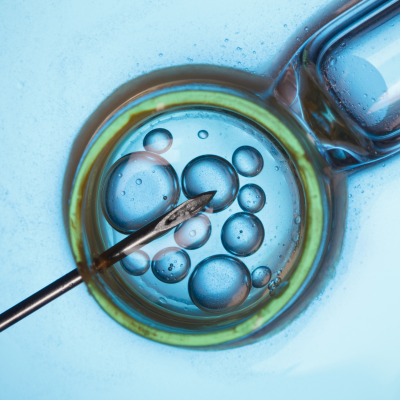FAQs
FREQUENTLY ASKED QUESTIONS
My tubes were “burned” and cut and I was told that my tubal ligation was “irreversible”, is that true? Your tubal ligation is considered a type of “permanent sterilization” because it is long-term; however, it is definitely reversible! In fact, practically every type of tubal ligation is reversible. When tubes are cauterized or “burned” during a tubal ligation procedure, destructive heat is typically applied to only a small segment of the tube in its mid-portion (2-4 cm), thereby leaving the majority of the fallopian tube unharmed. Since a normal fallopian tube is typically 10-12 cm (4-5 inches) long, a good portion of healthy tube is often still present after a tube is cauterized. At the time of your tubal ligation a careful evaluation will be made to determine how much of the tube had received thermal damage. The damaged portion will be removed and the healthy segments will be rejoined.
Am I too old to undergo a tubal reversal? What is your clinic’s age cut-off for the procedure? Our clinic’s age cut-off for performing a tubal reversal is 45 years of age. It is important to understand that age is an important factor in predicting success following a tubal reversal procedure. Highest success is achieved when a tubal reversal is performed in women who are under the age of 40. However, many women over the age of 40 have excellent ovarian reserve (strong functioning ovaries) and can be quite successful in achieving pregnancy following a tubal reversal. Various tests can be performed to determine a woman’s ovarian reserve prior to undergoing a tubal reversal. If it is determined that a woman’s ovarian reserve is reduced, alternatives to tubal reversal, such as in vitro fertilization (IVF) can be offered.
Am I too overweight to undergo a tubal reversal? What is your clinic’s weight cut-off for the procedure? A woman’s weight, and more importantly her body mass index (BMI = a measure of a person’s weight status, which is calculated based on height and weight), can impact the level of difficulty of performing the tubal reversal procedure and the success of a tubal reversal. Furthermore, an obese BMI (>30 Kg/m2) may result in serious obstetrical complications once pregnant (pregnancy induced hypertension, gestational diabetes…). In general, an overweight (BMI between 25 and 30 Kg/m2), or obese (BMI>30 Kg/m2) weight status may not affect your chances of getting pregnant following a tubal reversal. However, being overweight or obese can significantly prolong the operating room time and time under general anesthesia, which may increase the risk for complications. As such, our clinic’s BMI cutoff for performing a tubal reversal is 30 Kg/m2. However, we encourage all patients to schedule a tubal reversal free consultation with our Center to discuss their weight status and to plan for a tubal reversal once the target weight is reached.
My partner is healthy and has children of his own, is a semen analysis necessary? No, a semen analysis is not mandatory, however it is recommended. Certainly, in couples where the male partner is “unproven” (had not initiated any pregnancies in the past), a semen analysis is strongly advisable. When the male partner is “proven” (had initiated pregnancies with any prior partner in the past, particularly a recent pregnancy within the past 5 years), a semen analysis becomes optional. Semen analysis is an easy, quick, and very affordable test which is highly informative. In general, we recommend that a semen analysis is done prior to a tubal reversal. In the event that a semen analysis reveals very poor sperm quality/count, performing a tubal reversal may fail in achieving pregnancy. In such situations, alternatives to tubal reversal such as IVF with intracytoplasmic sperm injection (ICSI) may be offered.
Should I expect any additional out of pocket expenses when having the tubal reversal at your Center? No, our fee is a set fee of $5,900.00 which includes your initial consultation, preoperative examination and blood work, surgery, anesthesia, recovery, and postoperative follow-up examination, with no hidden fees. Please check the News and Promotions page, for current promotional offers.
Of course, the California Center for Reproductive Health works with various credit institutions (see “Cost/Payment Options”), offering excellent financing options for the tubal reversal procedure. Patients will be prompted to contact one of various such institutions in order to apply for a loan. Our Center also offers a “layaway” plan whereby partial payments may be made by the patient over the course of 6 months, until payment is received in full, at which time the tubal reversal procedure can be performed.
In general, most couples will conceive within the first 6 months after a tubal reversal procedure. If you are not pregnant following 6 months of trying, we recommend that you undergo a hysterosalpingogram (HSG) exam, otherwise known as the “dye test”, to determine the condition of the tubes. During an HSG, sterile dye is injected through the cervix and an x-ray simultaneously tracks the path of the dye to determine if the fallopian tubes are still open. If the fallopian tubes are open (which is the case in the overwhelming majority of cases), couples are simply instructed on timed intercourse in order to achieve pregnancy. Alternatives to timed intercourse, such as ovarian stimulation and intrauterine insemination, exist in the event that intercourse alone fails. If, unfortunately, the tubes appear to be blocked on HSG (an uncommon finding), a decision is made between further surgery versus the alternative of in vitro fertilization (IVF). ***If you require IVF the California Center for Reproductive Health will be your IVF provider and will discount your IVF cycle by $3000.00!.
Recovery tends to be fast for most patients. Since the incision made in the lower abdomen typically is not longer than about 2.5 inches, postoperative pain tends to be mild and recovery tends to be rapid. Therefore, most patients are on their feet within 24 hours of the procedure, and most regular daily activities can be resumed within 2 days of the tubal reversal surgery. The average time for returning back to work is 3-5 days. Complete recovery is typically achieved in 10-14 days.
Certainly, the operative report and/or pathology report from your tubal ligation can be very helpful, and you should make an effort to obtain them prior to the procedure. In the event that the operative report and/or pathology reports are unavailable (most hospitals and surgical centers will archive medical records older than about 5 years, making it more difficult to obtain such records), it will be at the discretion of the physicians of the California Center for Reproductive Health to determine whether a preoperative hysterosalpingogram (HSG) should be ordered. In an HSG, sterile dye is injected through the cervix and into the uterus and fallopian tubes, while an x-ray is performed simultaneously to track the path of the dye. The HSG can therefore reveal how much proximal fallopian tube remains following a tubal ligation (i.e. the length of the tube from its origin in the uterus to the point the tube was “tied”). The length of proximal tube, as determined by HSG (or by the operative report of the original tubal ligation surgery, if available) can help predict the success of the tubal reversal surgery. At the time of initial consultation, after obtaining a thorough history, our physicians will determine whether an HSG is necessary prior to the tubal reversal.
Conceiving after the fallopian tubes were permanently sterilized means that the tubal ligation procedure failed in one or both tubes. This can be due to a variety of causes, but is most likely associated with the type of tubal ligation surgery you had done. Unfortunately getting pregnant after a tubal ligation does not mean that your fallopian tubes are in working order, which means you still need to have a tubal reversal. Rarely, after certain types of tubal ligations, a canal may form connecting the two segments of tube on either side of the ligation. This is called “recanalization”. The canal however is often of smaller caliber than a normal fallopian tube and is commonly distorted. Because of this, sperm can often pass through and fertilize an egg; however, the resulting embryo is too big to travel through the canal and back into the uterus for a normal implantation. What results is often an ectopic pregnancy, located within the canal. This type of pregnancy cannot be saved, and if an early miscarriage does not occur spontaneously, or the ectopic pregnancy is not terminated early, rupture of the tube and internal bleeding can occur. A prior early miscarriage or ectopic pregnancy can be evidence of tubal recanalization following a tubal ligation. In cases where recanalization is suspected, it is important to obtain a hysterosalpingogram (HSG) prior to the tubal reversal procedure. The HSG can identify the abnormal canal, making it easier to identify and obliterate at the time of the tubal reversal.
The risk for an ectopic pregnancy in the general population is approximately 2% (this means approximately 2 out of 50 women who get pregnant in the general population have an abnormal pregnancy which implanted outside of the uterus). Because the tubes are very delicate organs which are prone to scar tissue formation and strictures, the risk for an ectopic pregnancy after a tubal ligation is approximately 3 times that of the general population of pregnant women. This means that the actual risk for an ectopic pregnancy is about 6-7% after a tubal reversal. To put it in perspective, a woman after a tubal reversal still has greater than a 94% chance that her pregnancy will be located normally in the uterus and not outside.
No, since the overwhelming majority of cesarean sections are done using what is called a Pfannenstiel incision (side-to-side incision in the mid-lower abdomen along the “bikini” line), we will use a small portion (typically 5-6 cm) of your old cesarean section incision to enter the abdomen. This means that no new scars are likely to be introduced when a tubal reversal procedure is done in women with a prior history of cesarean section.
No, no stitches or staples will have to be removed from your abdominal incision after the tubal reversal surgery. Our physicians will close your incision with a very cosmetic closure called a subcuticular closure. This means the incision will be held together with hidden stitches below the surface of the skin, which will dissolve over time and require no removal. In most cases this results in minimal scarring and a very aesthetic approximation which is barely visible.
At the California Center for Reproductive Health our physicians go out of their way to verify that your fallopian tubes are open at the time of surgery. This is done by first establishing a chromopertubation system: a system for flushing of the fallopian tubes, which reveals in “real-time” that the tubes are open. Prior to making the abdominal incision, a soft-tipped catheter is placed into the uterus through the cervix (from the vaginal opening), while you are asleep under general anesthesia. The catheter is next connected to a syringe filled with sterile blue dye. During the tubal reversal surgery, blue dye is injected into the uterus, filling the uterine cavity and the proximal portion of the tube (segment of the fallopian tube from its origin in the uterus to the point the tube was “tied”). When the scar tissue from the prior tubal ligation is removed, and the proximal stump is opened, blue dye can be seen spilling from that segment of the tube. Pushing dye into the tube is not only important to confirm that the proximal segment of the tube does not have a block along its path, but is also very useful in identifying the inside of the fallopian tube, which is often of such small caliber that it is difficult to visualize, even under microscopic view. Therefore, the chromopertubation system facilitates the tubal reversal procedure and optimizes the outcome of surgery. Next, the proximal and distal segments (on either side of the tubal ligation point) are carefully reconnected (reanastomosed) under microscopic visualization using very fine stitches, and blue dye is once again pushed into the uterus; only this time it is shown to spill from the very end of the tube (called the fimbriated end), confirming that the tubal reversal was successful. Despite the fact that establishing this elaborate chromopertubation system is time-consuming and is sometimes difficult for the surgeon, the physicians at the California Center for Reproductive Health feel that this step is invaluable in both optimizing the outcome of the procedure as well as confirming that the tubes have actually been successfully opened..
No, multiple studies have demonstrated that the chances of getting pregnant after a tubal ligation are the same for women who have had both tubes reversed and for women who only had a single tube reversed. In certain clinical situations, it is only possible to reverse one tube. This may occur if only one tube remains; for instance in patients who have previously lost their tube because of prior surgery. Furthermore, sometimes a previously “tied” fallopian tube cannot be reversed because of the way in which it was “tied”. For instance, in tubal ligation cases where extensive burning of the tube was performed, or too long a portion of the tube was removed, or a critical portion of the tube like the fimbriae (finger-like projections at the end of the tube responsible for picking-up the egg) were cut, a tubal reversal is not possible. However, in the vast majority of tubal ligation cases, at least one fallopian tube can be repaired satisfactorily. At the California Center for Reproductive Health our physicians always go out of their way to repair both tubes at the time of surgery. Various unique microsurgical techniques can be employed to reverse even the most challenging tubal ligations.
IVF is a wonderful alternative to the tubal reversal surgery in couples who wish to conceive after a tubal ligation and, in fact, IVF may be the only alternative for pregnancy after a tubal ligation in certain clinical situations. For instance, in couples where the male partner suffers from severely abnormal sperm (very low or no count…), performing a tubal reversal would make little sense because the sperm is too “weak” to be able to fertilize an egg naturally. Therefore, in cases of male factor IVF is indicated. Furthermore, in women with significantly reduced ovarian reserve (ovaries are not functioning well), IVF is a better alternative to a tubal reversal because with IVF, even if a woman has a very small number of remaining eggs or low quality eggs (i.e. reduced ovarian reserve), the eggs may still be harvested directly from the ovaries and fertilized in the laboratory with sperm to achieve pregnancy; this assists the reproductive process, relying less on “natural” means of conception, which are important following a tubal reversal. Therefore, it is important that a comprehensive assessment of both the female and male reproductive function be made prior to performing a tubal reversal, in order to determine if IVF is more appropriate. It is important to remember that in the overwhelming majority of cases, women with a prior tubal ligation are better candidates for a tubal reversal procedure than IVF. This is because such women have had proven fertility (since they have had children before) and can certainly get pregnant “naturally” following a tubal reversal. Moreover, although male factor is very common in the infertile population, it is much less common in the general population, which is the population that most couples with a prior tubal ligation come from. Therefore, as you are reading this because you have had a prior tubal ligation, it is very likely that you and your partner are excellent candidates for a tubal reversal. The board certified physicians at the California Center for Reproductive Health will determine your eligibility for a tubal reversal at the time of your initial consultation. In couples who are eligible for a tubal reversal and IVF, the decision to pursue one or the other depends on various other factors, such as cost, risk for multiple gestation, risk for ectopic pregnancy, patient anxiety, among others. Considering one important such factor, cost, it is important to remember that in general a tubal reversal is more cost-effective than IVF. For a comparison between tubal reversal and IVF, see “Alternatives to Tubal Reversal”.
















